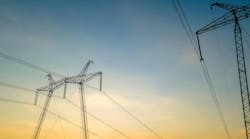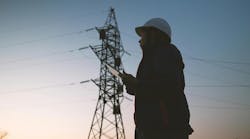I live in New Mexico, a state famous for its landscapes, national laboratories exploring state-of-the-art technology and UFOs. That’s right, unidentified flying objects, little green space aliens and flying saucers — the whole enchilada, as we say in the land of enchantment. This affinity for extraterrestrials dates back to the late 1940s when the Roswell incident — a flying saucer crash, dead aliens, a government cover-up and more — thrust New Mexico into the national limelight. Roswell still celebrates the event with an annual UFO festival, which attracts people from around the globe.
My UFO awareness stems from my engineering consulting work. I have a couple of static VAR compensator projects under construction in southeastern New Mexico, so I travel through Roswell every couple of months on my way to check on their progress. It was natural for me to think of flying saucers when an old utility friend told me UFO history had been made in New Mexico. My imagination again jumped to flying saucers while he was talking about the commercialized unmanned flying object.
If only we had the equivalent of CliffsNotes for all the acronyms we use, life would be simpler. We would know a UFO is not a flying saucer and terms like UAV (unmanned aerial vehicle), UAS (unmanned aircraft system), sUAS (small unmanned aircraft system), RPA (remotely piloted aircraft) and DRTD (drones and robotics for transmission and distribution) would be less confusing. The term “drone” covers all of them, but there is a lot of pushback from the UAS suppliers. One friend told me his company preferred UAV; after all, drone is what a politician does when talking. Good point.
Getting back to my friend’s story, he was excited about the latest developments in drone usage. Several years ago, his utility looked into the use of drones on transmission lines. However, like so many other potential users, it decided to wait until regulators, government agencies and the marketplace all got on the same page — especially when the Federal Aviation Administration (FAA) decreed the United States was a nationwide no-fly zone for commercial drones in 2007.
Fortunately, proponents of drone technology took the FAA to court, and it was ruled the FAA did not have the authority to make that decree. Now the FAA has to reconsider its no-fly edict and, as a result, has started issuing exceptions permitting specific commercial drone activities, but it is a slow process.
BVLOS Takes Flight
Industrywise, we have many proponents out there who saw the real advantages UAVs offered utilities. These folks kept kicking at that cactus (that is, regulatory) and the bureaucracy’s flexibility is increasing. This brings us back to the UFO story. The FAA issues special drone permits, but they only allow for line-of-sight flights. To be useful for tasks like transmission line surveying or maintenance inspections, drones must be allowed to fly beyond visual line of sight (BVLOS). There is no way an operator can walk or drive a right-of-way (ROW) and keep within visual range of a drone.
That is why the Oct. 25, 2015, New Mexico drone flight became such a historical event and excited my utility friend. It was the first FAA-sanctioned commercial UAV flight using BVLOS technology to take place inside the 48 contiguous states. Previously, the only FAA-sanctioned BVLOS UAV flight testing took place in remote Arctic regions off the coast of Alaska. The New Mexico BVLOS flight brought UAV technology a step closer to applications needed by the power industry.
The flight was part of the FAA’s Pathfinder program. BNSF Railway provided the infrastructure to inspect, while Insitu, a subsidiary of the Boeing Co., provided the drone and the FAA certification to fly it. Insitu used a small ScanEagle surveillance UAV to provide real-time video of a 64-mile survey of a 132-mile section of BNSF railroad track near Vaughn, New Mexico. The 35-pound aircraft flew about 1,000 feet above the railroad track at speeds of approximately 90 mph. It was equipped with a transponder to transmit its location to local air traffic control and a video camera streaming data back to the ground station.
A Win-Win
My friend was excited because BVLOS drone flights are exactly what electric utilities need to fly UAV flights over transmission line ROW. Drones are capable of high-resolution videos and 3-D renderings, but they need the freedom of BVLOS flight. Today’s special FAA permits for commercial drone flights require the pilot to be in visual contact with the drone, which is not easily done over remote and rugged terrain.
This test flight suggests new regulations for BVLOS commercial drone applications ultimately will be approved, which will set off a tsunami of utility UAV applications when it happens. I have rented helicopters to inspect ROW, and it is expensive. Drones will reduce those costs substantially, and they are a lot safer for the utility personnel doing the fly-over.
Let’s begin pushing harder for more flexibility. We need BVLOS-capable UAVs. It would be a win-win for regulators and utilities alike. After all, everyone’s goal is securing a more reliable power grid while improving safety and reducing costs. Flying robots offer the opportunity for that type of technology to take off.

